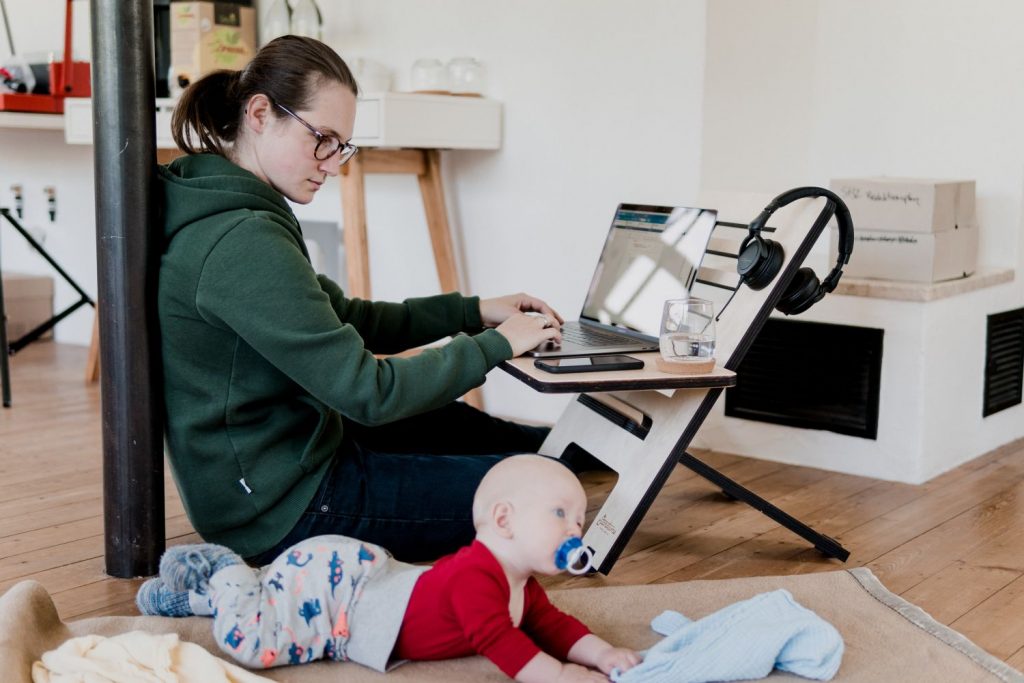Leaders need training for the future

Amid a third national lockdown, where people have been told to ‘work from home unless impossible to do so’, it’s not just the weather that’s bleak.
The novelty of homeworking has worn off for a portion of the population previously unused to doing so until Covid-19 reared its head. The benefits are now ingrained and forgotten, which has seen downsides come to the surface.
The isolation. The pressure to be productive when other people are in the house/whilst trying to home-school/balancing commitments in our personal lives. Managing fears about the changing world and worries over the sustainability of our income.
Employees are commonly bombarded by information, with little output to share information and with no support on how to apply it. Perpetual Zoom meetings and virtual get-togethers, endless phone calls so managers can ‘check in with the team’, recommended books and podcasts…the list goes on. Consuming and absorbing such information is all well and good, but if we’re not really doing anything with it, it risks adding to feelings of overwhelm as we try and get everything done in far-from-typical-circumstances.

The extra skills newcomers to homeworking have had to learn—such as technological skills, self-management and discipline, compartmentalising different aspects of work and home life—were thrust upon them during a time of confusion and chaos. Most people will likely have simply muddled through 2020 in the hope that the situation would soon change.
Though vaccines are being delivered around the clock, there’s still no clear end date in sight. Those wanting to work from the office still have no idea if or when they will be able to do so.
The fact that the UK workforce (who are able to) will be working from home for many more months to come is surely reason enough for managers and leaders to change, and possibly learn new skills themselves.
This is because it’s completely different managing someone over a distance and via a screen than when they’re physically present and carrying out their role in front of you. Soft skills need to come to the fore, different strategies are necessary to help employees remain motivated and productive. Support is needed so that team members can focus amongst the perpetual onslaught of information and ‘noise’. Helping others to filter and prioritise will be crucial over the next year…and possibly further in the future. After all, now that working from home has successfully been implemented by many companies—even those that wouldn’t have otherwise entertained the idea, pre-pandemic—businesses will likely retain this as an option even when we’re allowed to return to shared offices and workplaces.
There are also practical considerations. Working from home is no longer a temporary situation. Companies have a responsibility under the Health and Safety At Work Act 1974 to ensure their homeworking employees’ workstations are appropriate and that they adhere to H&S legislation, which would suggest that they should undergo a risk assessment. Employers (and, in turn, managers) are also responsible for the welfare of their employees working from home. Policies that cover what signifies harassment or bullying, the flagging of mental health concerns, etc., may need updating…things that may appear quite different at home compared with when everyone works from the same physical hub.
Having a section of, if not all, your team at home on a permanent basis will change the culture of a company, going forward…it’s bound to. Policies and operational procedures may need updating, too, to reflect this new way of working. Fighting the fire was all well and good in 2020, but more concrete strategies needs to be formed, applied and documented.
Employees’ expectations may have altered over the last ten months, the company may have diversified to survive…what individuals may have initially agreed to may be quite different from their current tasks. When everyone is pulling together at the outset of a crisis, feelings around these issues may be shelved, but once the upheaval steadies and new working practices become the norm, resentment or unhappiness can fester. Managers have their work cut out for them, certainly—it’s easy for employees to present a false front when communicating by screen, so it’s important that they have other methods to gauge wellbeing.
One of the main issues for remote teams is if managers continue to align activity and hours worked with output. If the desired results and outcomes are still being realised, this should be the focus. It’s difficult enough working in isolation, and team meetings/checking in chats can soon add up, time wise. Don’t pile on more pressure for the sake of it using outdated working methods; instead, adapt your understanding to meet today’s flexible working practices.

Encourage your team to see communication as a two-way street and not just a method for when the manager wants to check up on them. They may need coaching on how to ask for support when it’s needed, as no one will notice them drowning in work like they may in an office. Strive to maintain a connection.
There are many different personality types in society and, therefore, not everyone will adapt to homeworking in the same way. Some employees may need more support than others. Our Jigsaw Discovery Tool is an effective way to learn more about this, based on the very latest neuroscience—it’s a cutting edge tool when it comes to understanding and harnessing human performance.
From the dawn of industry, new management techniques have always been taught, to adapt to changes in legislation, developing markets, technological advances, consumer trends and societal influences. The pandemic has brought another shift, and it’s important that leaders and managers understand what’s changed, and how they can get the best from their team as things stand today, and not based on how things were five years ago…
Book a free consultation
Book a free 30minute consultation to discuss the leadership shift, brought about by the pandemic and how your leaders can get the best from their teams, as we start to re-open the economy





Responses